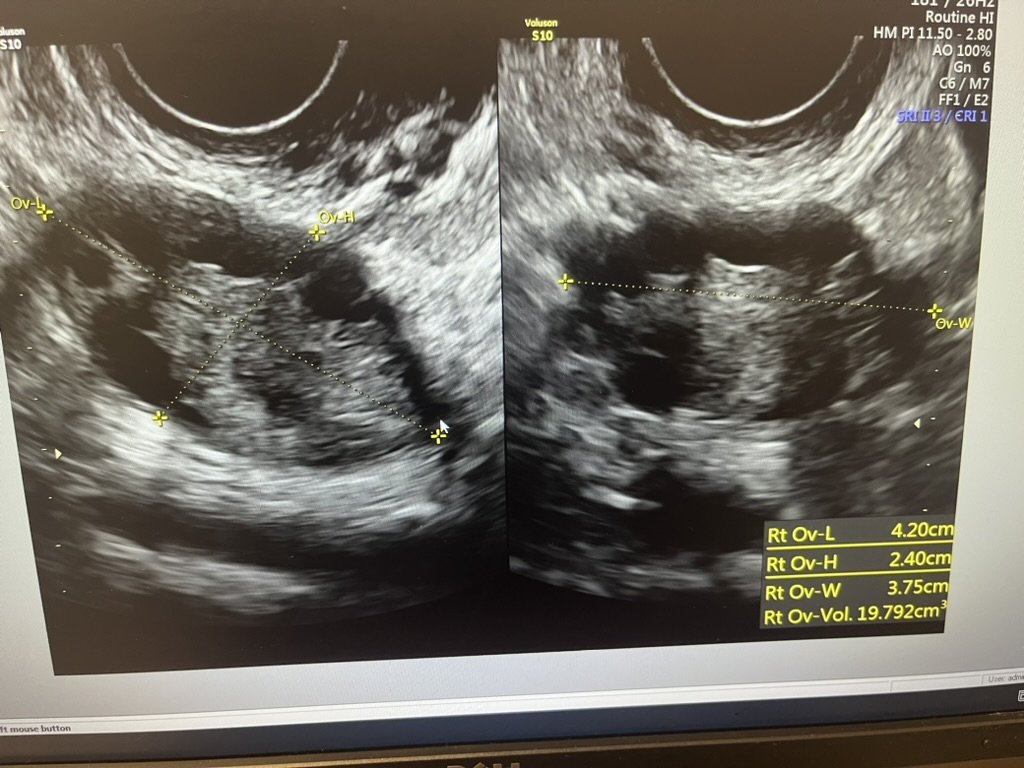PCOS
Part 1: What is PCOS, what is happening in my body and diagnosis.
I remember the first bleed I experienced knowing body had changed, that something was wrong, clearer than I can even remember my menarche. I was living in Vietnam at the time and the pain and heaviness was like nothing I’d ever felt before. After that one bleed, everything changed. I did not have a symptom free period for three years following.
What is Polycystic Ovary Syndrome? What symptoms may suggest I have it?
Polycystic Ovary Syndrome (PCOS) defined by the NHS as a combination of two or more of the symptoms oligomenorrhea (infrequent/irregular periods), hyperandrogenism (excess male sex hormones) and polycystic ovaries. While traditionally classified as a hormone condition, affecting the function of a woman’s ovaries, it is also important to recognise the metabolic implications. Insulin resistance, is found in 35% - 80% of women with PCOS. PCOS is not just cysts on your ovaries!
Some of the symptoms associated with PCOS include:
Irregular periods, these can vary in length from 30 to 90+ days, or a period missing completely. This is linked to disruptions in ovulation.
Infertility, due to lack of or inconsistent ovulation.
Excessive hair growth, particulary the face, chest, arms, back and legs, due to increased androgen production.
Weight gain
Thinning hair and hair loss from the head
Oily skin and/or acne
You may experience all or none of these. For myself? It was irregular periods (between 28 to 38 days from when I began tracking), hair loss (clumps coming every time I washed or brushed), thicker and darker hair growth on the tops and backs of my thighs, weight gain which I particularly carried around my middle (I had gained 20kg in Vietnam) and extremely heavy, painful bleeding on day 1 and 2.
What the hell is going on in my body?
Essentially, PCOS is a combination of hormonal imbalances that are feeding each other - creating this kind of ongoing cycle.
Due to irregular hormonal signaling, higher levels of male sex hormones such as testosterone are produced by the ovaries. This then has a knock-on effect on the production and important balance of the hormones regulating ovulation: Follicle stimulating hormone (FSH) and luteinising hormone (LH). LH is too high compared to FSH, so the follicles in your ovaries that never mature properly and release an egg. You are therefore, not ovulating and these small follicles can remain ‘stuck’ in your ovaries - these are the ‘cysts’ we are referring to. Now, throw in insulin resistance! Your cells stop become less responsive to insulin, so your body keeps producing more to try and get the job done. This increased circulating insulin pushes the ovaries to continue making MORE testosterone. Bringing us back to the beginning; high testosterone disrupts ovulation and the cycle continues.
How is it diagnosed? Is a diagnosis important?
In the NHS, diagnosis is made by tracking irregular/infrequent periods, blood tests for hormone levels, ultrasounds to show the polycystic ovaries. You may also receive a HbA1C to check the presence of insulin resistance.
Formal diagnosis can be a double edged sword; a formal diagnosis can create a sense of ease, you know what is wrong and what you are working toward. But, there is also the label. You become and manifest the diagnosis you have been given, it becomes who you are.
I never received a formal diagnosis from the NHS. My periods were irregular, painful and heavy but hormone and HbA1c blood tests came back within range. My ultrasound showed cysts in both ovaries, particularly in my right which was 3x the average volume of an ovary. No one followed up with me. No one called me to discuss a diagnosis or treatment. I didn’t mind, at this point my naturopathic nutrition studies were underway and I knew metformin or the pill were not options for me. I decided to dive deeper with a HTMA test. I found my mineral levels were through the floor and there was no way my insulin or adrenals were functioning efficiently enough. Everything pointed to PCOS. So that is the route I took.
My polycystic right ovary.
How can I heal from PCOS?
Healing from PCOS takes several forms. You have to heal the physiological; blood sugar balance, addressing mineral imbalances, supporting liver function etc. But, you also have to heal the emotional and spiritual. You have to connect with yourself, love yourself and make self care a priority. I’ll cover all this in part 2!

